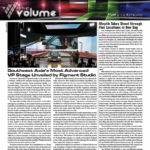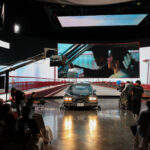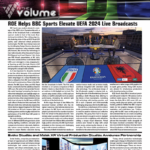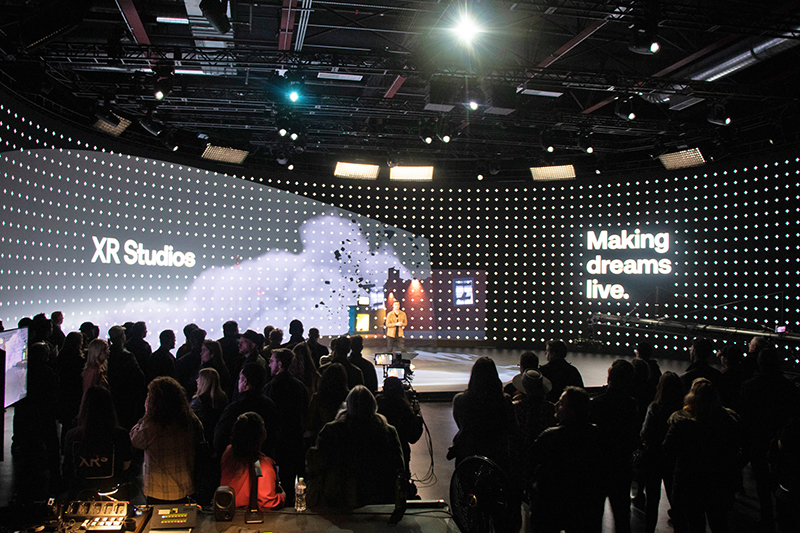
Los Angeles-based XR Studios, a part of the Solotech group, specializes in immersive technology for entertainment. Known for producing Extended Reality (XR) and Augmented Reality (AR) workflow solutions, XR Studios has delivered experiences for a wide range of artists and brands including Twitch, Katy Perry, Snapchat, Riot Games, Billie Eilish, Viacom, Black Eyed Peas, Amazon, and Tik Tok, among others. XR Studios’ work is at the core of mixed reality technology for broadcast, live, and virtual productions. They recently moved into the historic Eastman Kodak Co. building in Hollywood, a fitting continuation of the building’s legacy of housing cutting-edge film technologists. Certainly, the work of XR Studios is among the leaders in the ever-evolving virtual production segment.
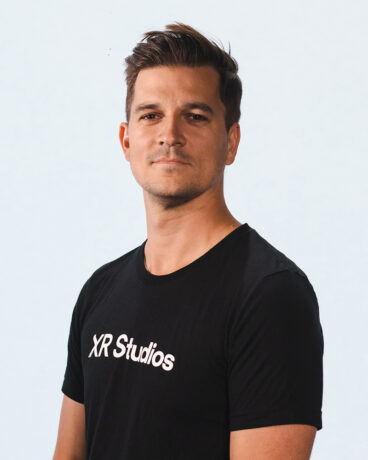
J.T. Rooney, President of XR Studios, began his career creating immersive visuals and controlled advanced systems for the New World Symphony, later joining creative agencies Lightborne and then Silent Partners Studios where he was Screens Producer for a range of music tours. At XR Studios, Rooney and the entire team work to deliver productions in an entirely new way. With the recent opening of the XR Studios Hollywood Campus, PLSN spoke with Rooney about the new space, XR Studios offerings, and virtual production today.
How would you describe XR Studios?
XR Studios is a technology-focused production company, and our job is to focus the client experience on the creative possibilities of using new groundbreaking technology, versus struggling through the intricacies of new groundbreaking tech. Over the last couple of years, we’ve focused on helping create workflows that allow people to explore new territories and do fun new things with the technology that is available and emerging; and a huge part of that is offering the space, the tech, and the people. That is what XR Studios brings.
Our journey has been excitingly interesting over the last four years, in that my background—and a lot of our founders’ backgrounds—are from the live entertainment world. We really saw that as our first focus into this space. And over the last year and a half, we’ve started to do a lot more single-camera production work as well: music videos, commercials, car shoots, inserts for TV and film. The technology is growing, and democratizing in a way that allows us to spread to more areas than just multi-camera broadcasts for live entertainment.
What differentiates XR Studios?
One thing that’s been really interesting about our approach from the very beginning is focusing on project-based innovation and really pushing the boundaries to explore new territory. For us, there has always been a focus on seeing what’s possible and saying ‘yes.’ It has always been important to us to find new solutions and new workflows.
The other main thing that is different about XR Studios is that we take a full-service approach. Now that there is a wide spectrum of stages available, we like to differentiate our space and team through a very hands-on approach. We walk hand-in-hand with our creative partners – having our knowledgeable team guide the entire process – to really make it all happen. This has set us apart over the years.
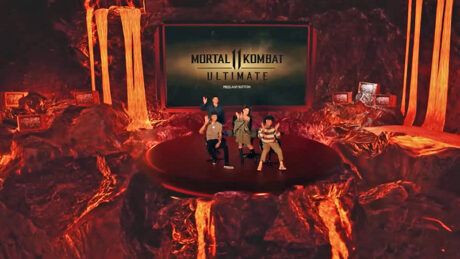
To that point, it’s not just space and gear, it’s the team behind it that understands how to creatively use that gear. Talk about the team behind XR Studios.
We have a full-time staff here that’s working day-in and day-out regardless of projects going on. Because we have a team that moves from project to project—over the last four years—we’ve been able to grow and learn from each production. It’s a collective hive mind with a lot of experience.
And there is also the time that is in between projects, where we take what we learned from those projects and we work on further-developing the technology. We rely on and work closely with our technical partners including disguise, RED Digital Cinema, Megapixel VR, and Kino Flo. The work that we do and collaborate on bleeds back into the rest of the community, growing the whole community working in this area; a rising tide lifts all boats. Our team is made up of producers, creative technologists, engineers, studio managers, and production coordinators. The team here is built specifically to make it the most efficient and effective version possible.
Tell me about the new space in the historic Eastman Kodak building.
It’s super fun. I think the exciting thing about where we are now is that this building was built in 1929 as an outpost for the Eastman Kodak Co, who were here until 2012. Its front doors used to open onto Route 66, which is Santa Monica Blvd. Right across the street from us is Sunset Las Palmas Studios, which was an old soundstage lot. We’re right in the middle of the rich Hollywood history. This building was specifically used by Eastman Kodak as a research facility, where a lot of the early work that happened on talkies happened here. The building has this long history of being on the edge of what was possible with film. There is even a screening room here that was used to look at different types of film stock; where meetings would happen to make sure that the industry was pushing forward. We really love that we’re on a footprint of something that has a much bigger history than us, and that it is always looking towards the future while remembering the past. Now we are here and we’re still leaning into technology and allowing creative things to happen, pushing things forward – which is a really fun connection.

How many studio spaces do you have there and what’s some of the technology?
We’re currently set up with two studios. Studio A is a flagship XR studio with a 70’ wide LED floor that’s made of ROE’s BM4 product. It’s about 35’ deep and 20’ tall, and the walls are ROE Black Pearl 2V2 panels. Studio A does not have a permanent LED ceiling, but we’re using a new light that we helped develop with Kino Flo called the Mimik. This new product is used as our ceiling elements in Studio A. The thing about ceilings is that there really needs to be a reason for it. I think you’ll see a lot of stages have changed their ceiling designs over the last three years to be more minimal, more flexible and removable, because it can be quite obstructive to production. You’ve got to find the balance there. With the disguise platform that we’ve been involved with from the very beginning, we’re able to do virtual set extension and AR elements. Studio A is set up as a multi-camera broadcast stage. We’re also seeing people use that stage for single camera work, more cinematic work. The goal for that Studio A stage is to be a ready-to-go broadcast stage.
Studio B is set up as a more ‘traditional’ virtual production stage with a 41’ wide LED curve, no LED floor, and then a ROE CB5 ceiling. The walls are ROE Black Pearl 2V2, which is the more traditional for VP setups nowadays. The ceiling is in two different parts that articulate on motors, so we’re able to go up and down, and change the pattern, allowing us to use it for car process work and for other things. Studio B is much more of a run-and-gun virtual production studio that’s set up for single-camera productions, commercials, and music videos.
What are the support facilities like?
We have multiple production spaces; everything from a control room that’s setup for multi-camera broadcasts, including client spaces for production and dressing room spillover. We have two audio rooms that can also be used for video. There is a 45-seat screening room, which is connected over fiber to the studio, so we can use it as a video village, as a streaming facility, or as a review session. That’s been great for clients. And we just finished the final construction in the space, so our dressing rooms are now completed, including private VIP access from the street. We are very lucky to have a 100+ parking spots in the middle of Hollywood, which is fantastic. That’s probably worth more than the building!
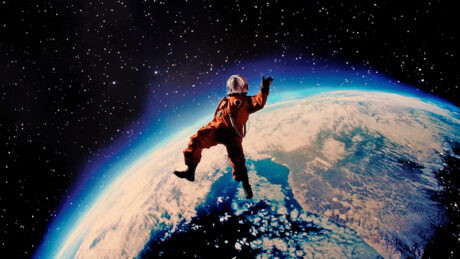
What are some considerations clients need to have before they work in virtual production?
One of the biggest things we talk about with clients and partners is understanding the why and the want of the project. We always discuss that to make sure that our workflow and the technology as a whole is the right fit. We’re really honest with it and transparent, and if it doesn’t work, we’ll recommend them elsewhere and make sure that they have a good experience.
People need to think about what they want to do. What we’ve found over the last couple years is that there’s two solutions with virtual production and LED stages. One is replacing more of a need, which is let’s say car process shoots or a stage insert shot, where you’re trying to trick the audience to believe something is totally real, and you’re using this technology to replace an achievable scene. ‘I need to do an interior shot’, or ‘whoops, I forgot something here’, or ‘hey, I want to shoot eight different people in eight different cities driving today’. That is a great use for the tech.
The other use of the technology that we really love is, ‘I want to use this technology to do something that’s never been done before’, or to explore new locations or magical worlds or transitions that you couldn’t do in a physical state. I think that’s what’s really interesting – when we’re getting to explore wants and how to do things that aren’t possible otherwise.
What are some misconceptions that people have about virtual production work?
There’s quite a lot of misconceptions, for sure. I think the most challenging part of a new workflow and a new industry, is that education is the biggest mountain. Education is probably the thing we spend the most time on. It is interesting when you’re educating on something that is still being developed, so our interpretation might be different than another studio or for a different type project; a film interpretation versus a music video workflow. They’re all quite different.
What we try to be careful about is not to say it’s better, faster, cheaper, or easier, because that’s rarely the case for anything. It’s just a different workflow. It’s better for some things and it is cheaper for some things, but it is not a one-size-fits-all magic bullet that solves all your problems. That’s one of the biggest misconceptions. People look at new tech and go, ‘Oh my God, everything’s perfect. I hit one button, it’s magic!’ And that’s not the case.
A big conversation we often have is the budgeting side of things. Costs can seem quite high in the space because you’re using your entire budget or shoot in one day essentially. Let’s say we’re filming in eight virtual locations on that day. If you were to do a normal project and physically go location to location, you talk about that budget in a different way. You look at how it’s spread out over time, and it feels different. Whereas here you see a lot of those costs all in one day, all in one place, and that can be quite concerning. What we’ve found with most producers and teams when we sit down and go side by side, we’re usually in the right ballpark of where they were going to be—maybe less or maybe more—but it just depends on what you’re trying to achieve.
Let’s talk about some of the technology you use—and have been a part of developing—for virtual production workflows. What are you excited by technology-wise?
What we are excited about is still the day-to-day. For me in my own personal career, I’m excited that everyone is using real-time content creation tools on such a normal daily basis. I was a loud supporter of real-time content in the live industry in 2015 and 2016 with the advent of new tools like Notch VFX and using Touch Designer, as well as when Unreal Engine first came out. So, I’ve always been on a bit of a soapbox for that. I’m very, very happy that a lot of the live community, as well as the film, TV, and commercial community are now using real-time content tools because it allows for not only efficiency on set without having to wait to render, but it’s a creative tool. It allows you to explore and iterate and grow and look for new things, which I think is fun. Real-time content being at the core of everything now is really exciting for me.
What do you see going forward?
Looking towards the future—of course it’s already starting now, obviously—AI is a huge player in everything we do nowadays. On the creative side, we’ve been involved with partnering with companies to help create new AI tools for the virtual production space. We partnered with a company called Seyhan Lee, working with them and collaborating to create a new tool called Cuebric. It’s starting to be used on stages with an AI image generation tool that’s meant for LED stages. On your LED stage now using Cuebric, you can type in “polar bear and igloo on the North Pole,” and it will create that text to image generation. It’ll create for you an image, which is quote-unquote “normal” AI stuff nowadays, but the interesting thing is that it segments it into layers. It creates a two and a half-D layer for you, so it works on screen to give you a little bit of parallax. Imagine theatrical flats where you’d get that feeling of depth based on multiple layers of flat images. It’s the same idea on an XR stage. So, it’s not a true 3D image, but it allows you to create these worlds very quickly, very rapidly, and they’re already working into 3D space in the near future, which is exciting to see. AI is moving at the speed of light, and we’re trying to harness it effectively and thoughtfully however we can.
From concept to completion, XR Studios is a premier, full-service solutions provider led by a network of creatives and industry leaders at the core of mixed reality technology for broadcast, live, and virtual productions. Learn more about their work and make further studio and project inquires at www.xrstudios.live
